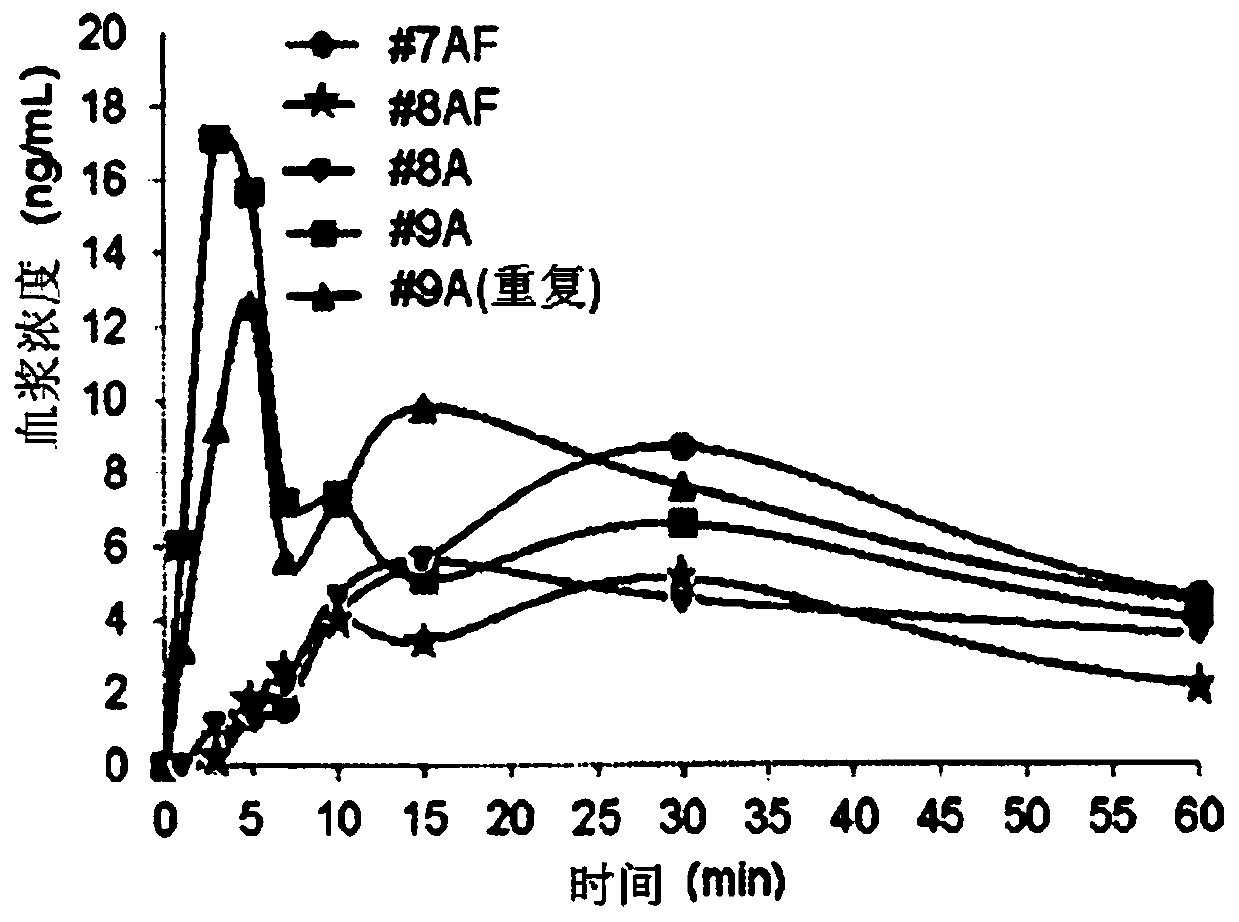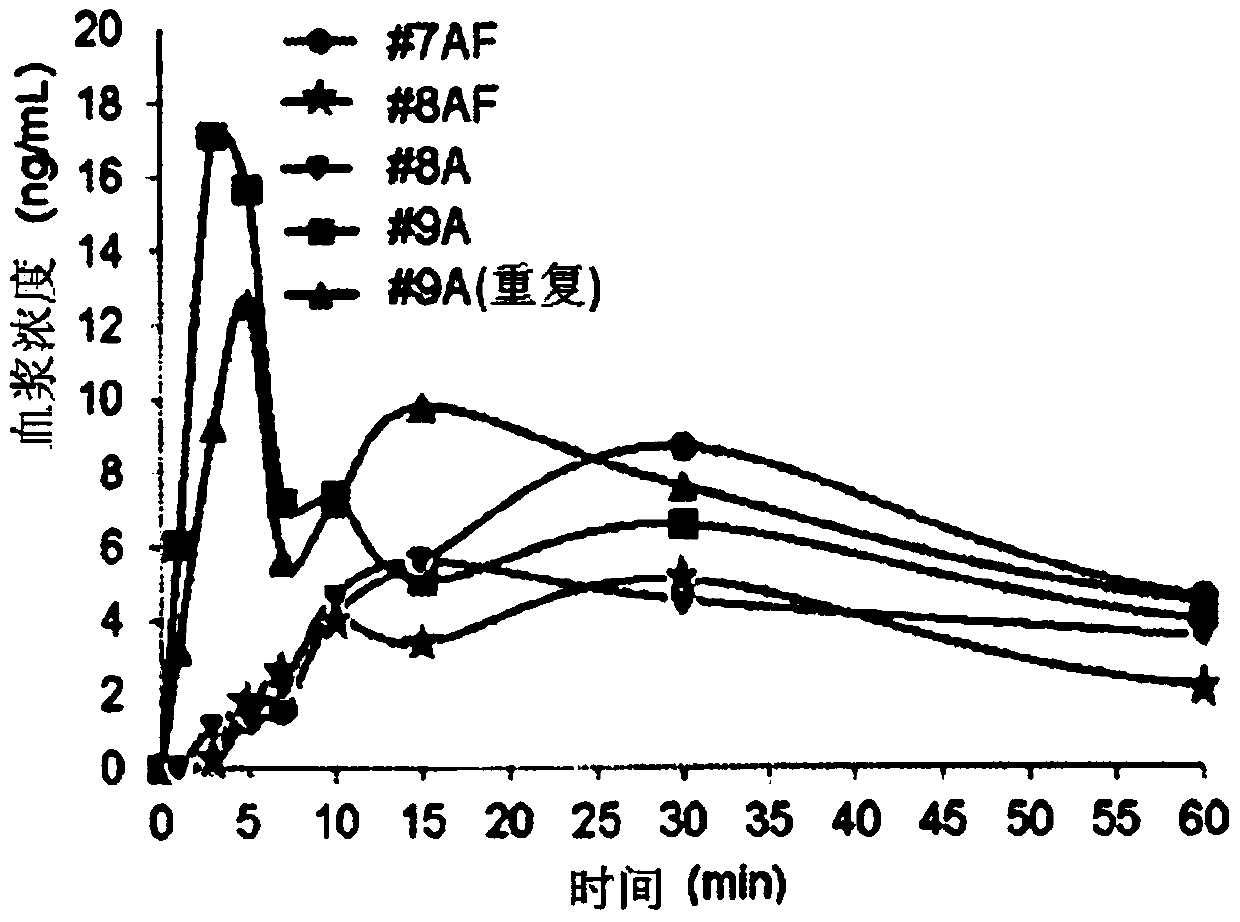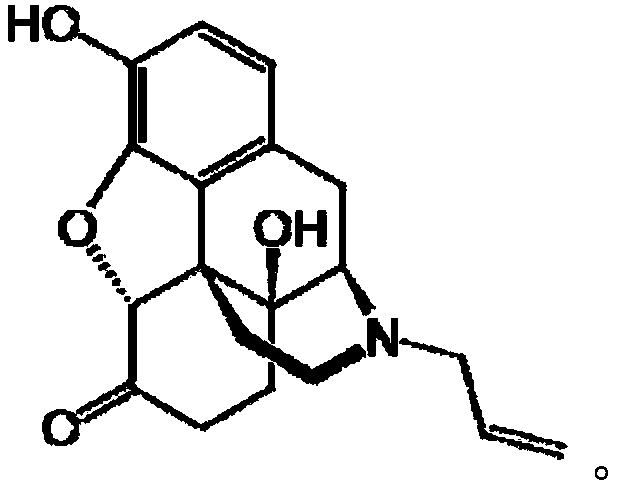Liquid naloxone spray
A naloxone and liquid technology, applied in the direction of organic active ingredients, drug delivery, medical preparations of non-active ingredients, etc., can solve problems such as low bioavailability, discomfort between doses of patients, and the need for repeated administration
- Summary
- Abstract
- Description
- Claims
- Application Information
AI Technical Summary
Problems solved by technology
Method used
Image
Examples
Embodiment 1
[0182] Embodiment 1: the preparation of the naloxone preparation containing ethanol
[0183] First, ethanol and USP purified water were degassed separately to prepare liquid spray formulations. Next, ethanol and purified water were purged with nitrogen, respectively. Soluble excipients were then dissolved in ethanol or purified water based on solubility. Next, the solutions are combined. Add naloxone to the final solution and mix until dissolved.
[0184] Strawberry flavoring is used as a raw material for flavoring.
[0185] Table 1 Stable Liquid Naloxone Spray Formulations
[0186]
[0187] value = %w / w
Embodiment 2
[0188] Embodiment 2: the stability test of naloxone preparation
[0189] The formulations listed in Table 1 were tested for stability at 40°C and 55°C ± 2°C, 75% ± 5% relative humidity for 8 weeks. Stability data were collected at zero, one, two, three, four and eight weeks at 55°C and at zero, four weeks and eight weeks at 40°C. Assays and impurity detection were performed using high performance liquid chromatography with UV detector. The assay is performed at 288 nm and expressed as % of initial concentration. All impurities were analyzed at 240 nm and expressed as % area. The amounts of specific impurities are listed in Tables 2A to 2F and 3A to 3H as area percentages of the total impurity amounts for each formulation. "BQL" means "below quantifiable limit" and "ND" means "not detected".
[0190] Table 2A to 2F. Stability of liquid naloxone spray formulations stored at 40°C ± 2°C, 75% ± 5% relative humidity qualitative data
[0191] 2A Stability of Control Formul...
Embodiment 3
[0222] Example 3: Droplet Test
[0223] To determine the spray profile of Formulation #5A, it was subjected to a standardized drop test. A challenge in preparing a sublingual and / or intranasal spray formulation of naloxone is that it must be able to produce spray droplets greater than 10 microns in diameter. Aerosol droplets 10 microns or smaller can be inhaled into the lungs. Optimum particle sizes for sublingual and intranasal spray droplets are 20 to about 200 microns in diameter. It is desirable for formulations to have a droplet size close to 20 as this increases surface area and increased surface area exposure is a factor contributing to high bioavailability. Sublingual and intranasal formulations should be able to maintain a consistent droplet size throughout their shelf life.
[0224] Droplet analysis is performed using standard laser analysis procedures known to those skilled in the art. Droplet size distribution (Dv10, Dv50, Dv90 and Span tested at two distance...
PUM
 Login to View More
Login to View More Abstract
Description
Claims
Application Information
 Login to View More
Login to View More - R&D
- Intellectual Property
- Life Sciences
- Materials
- Tech Scout
- Unparalleled Data Quality
- Higher Quality Content
- 60% Fewer Hallucinations
Browse by: Latest US Patents, China's latest patents, Technical Efficacy Thesaurus, Application Domain, Technology Topic, Popular Technical Reports.
© 2025 PatSnap. All rights reserved.Legal|Privacy policy|Modern Slavery Act Transparency Statement|Sitemap|About US| Contact US: help@patsnap.com



